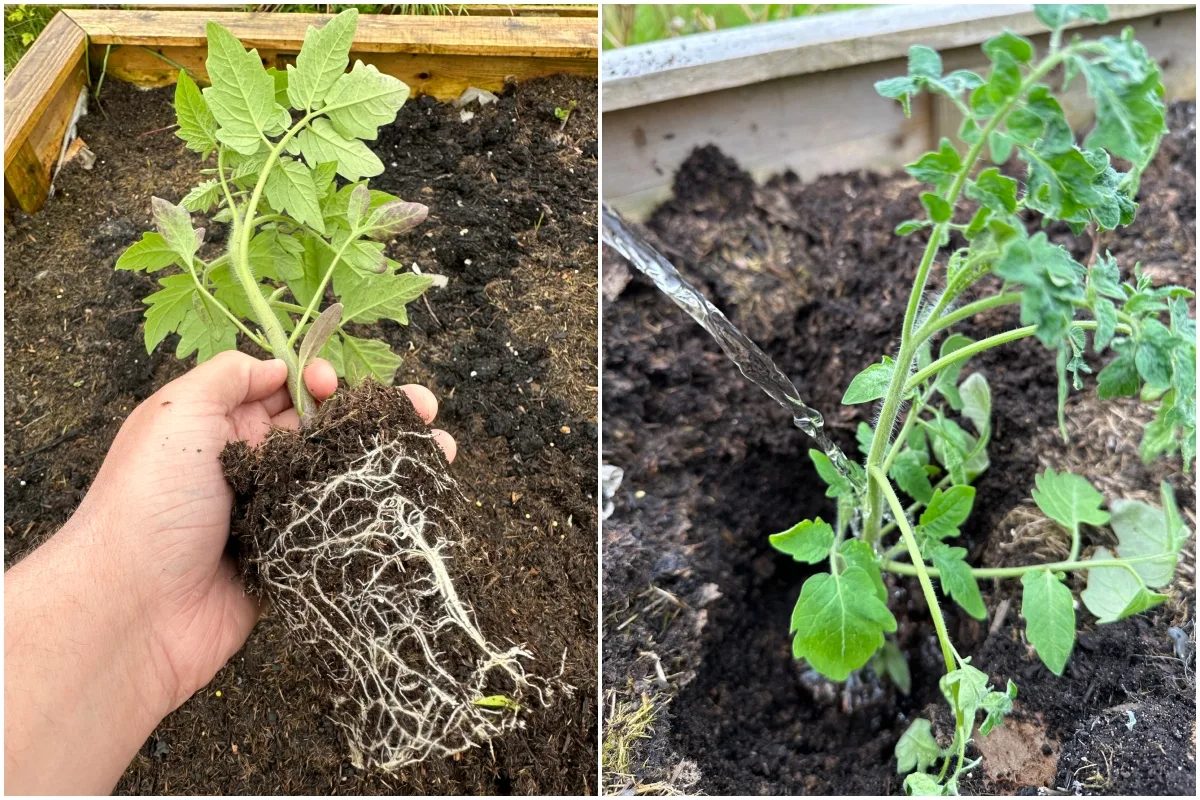
Tomatoes are, without a doubt, the most popular vegetable grown in backyard gardens worldwide. And while it’s rare to find someone who only grows carrots or eggplant or radishes, there are countless gardeners who only grow tomatoes.
Part of their popularity stems from the fact that this versatile little nightshade is used in cuisines all around the globe. Tomatoes have countless varieties as well. Whether you enjoy heirloom slicers, cherry tomatoes by the dozens, or traditional paste tomatoes for your secret sauce, you have more than 10,000 varieties to choose from.
And new strains are developed every year.
While tomatoes have an aptly earned reputation for being a bit fussy, they’re still easy enough to grow that everyone has at least one in their garden. And tomatoes are often the vegetable that leads a new gardener to a lifelong love of growing things.
It’s no surprise that gardeners make countless mistakes each year growing tomatoes.
Time and again, we end up with something going wrong because we overlooked a detail, forgot to do something at the right time, or failed to notice something until it was too late.
Let’s use this list to make tomato growing as easy as possible. Tomato growing mistakes? Not in your garden.
1. Starting Seeds Too Late
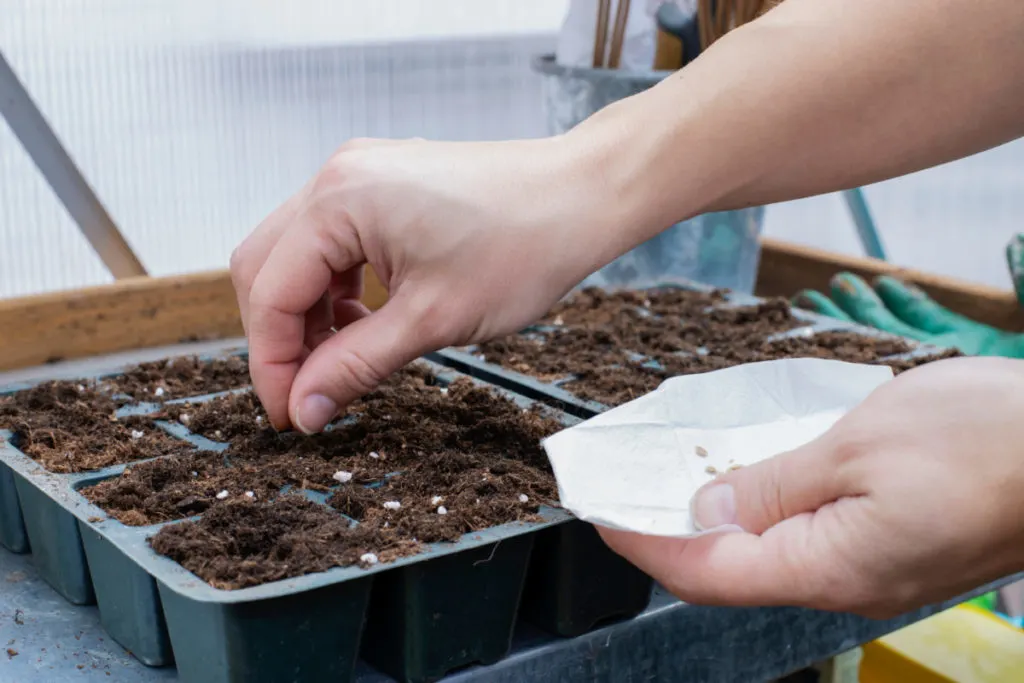
Tomatoes need plenty of time to grow and mature before they will bear fruit. You want seedlings with thick stems and large, healthy root systems. Too often, gardeners start their tomato seedlings late and end up with spindly seedlings when it’s time to plant them outdoors. Not only does this slow down your growing season, as the seedlings have to catch up, but the plants aren’t as hardy.
They’re more likely to be damaged by a sudden cold snap in the spring or the arrival of pests.
Most seed packets advise starting seeds 8-10 weeks before your last frost date. However, when it comes to tomatoes, I would advise starting them even earlier. 10-12 weeks before your last frost date gives you plenty of time to grow large seedlings and correct any germination or growing issues early in the game, so you aren’t racing the calendar.
Starting tomatoes early also gives you time to use my method of potting up to grow monster tomato plants. (Which I’ll get too further down the list.)
2. Choosing the Wrong Variety for Your Growing Season
Far too often, gardeners living in a cooler climate choose a variety of tomatoes that leaves them with only a handful for all their efforts. They’ve mistakenly chosen a variety that requires a much longer growing season to bear fruit, and about the time the plant gets going is when they get their first frost.
If you live somewhere with a short growing season, you’re limited on what tomato varieties you can grow.
You need plants that will grow and set fruit quickly. And for the most part, that means growing determinate varieties.
This also means starting tomato seeds earlier and growing tomatoes undercover to maximize your season.
Check out our list of Fast Maturing Tomato Varieties For Short-Season Growers.
3. Choosing the Wrong Variety for Your Needs
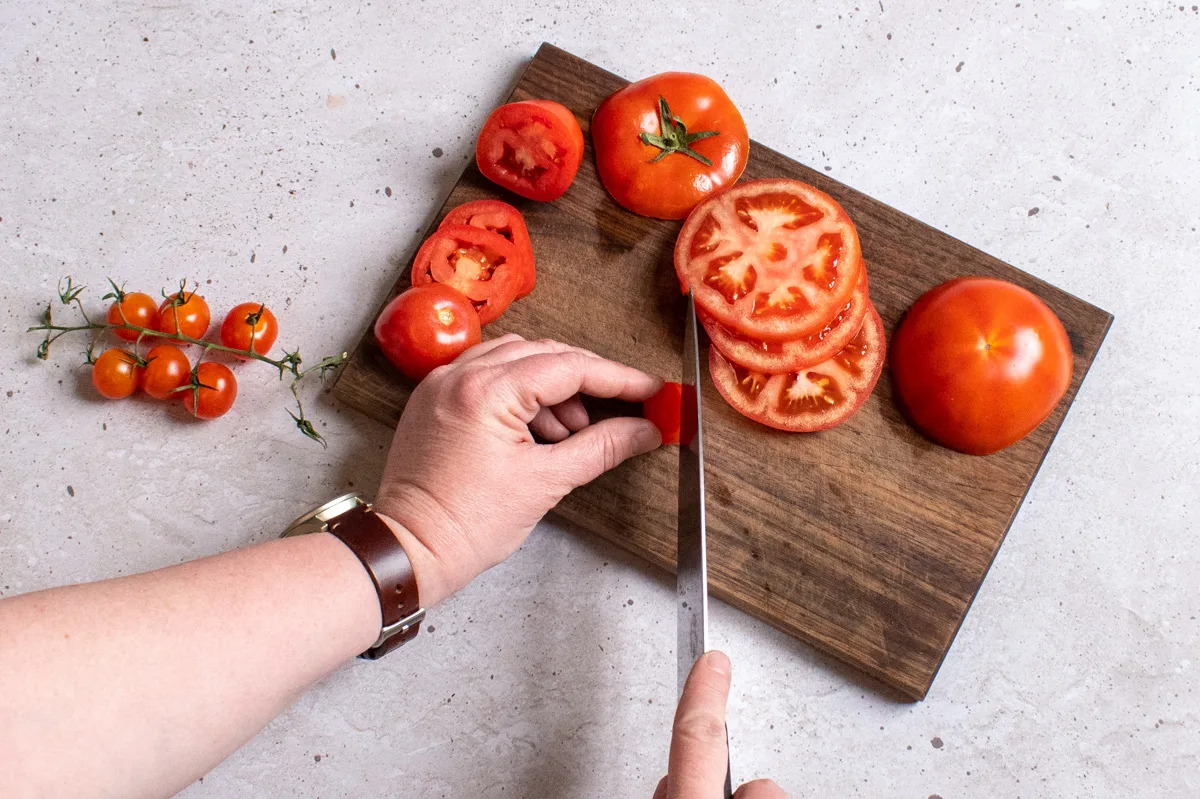
Specific tomato varieties have been cultivated for certain culinary purposes over the years. For instance, paste tomatoes have a lower water content, making them ideal for canning sauces, juice and tomato paste. Cherry tomatoes are perfect for snacking on and topping salads. And many hybrids have been developed to give you the perfect slicing tomato.
Choosing an indeterminate variety when you want to can your harvest isn’t a good idea either. Indeterminate tomatoes tend to put out fruit sporadically due to their vining habit. If you want to can your harvest, choose a determinate variety that sets its fruit all at once.
Before you order a bunch of tomato seeds, it’s a good idea to think about what you’ll make with them and when you’ll need your tomatoes.
4. Starting Seeds in Poor Conditions
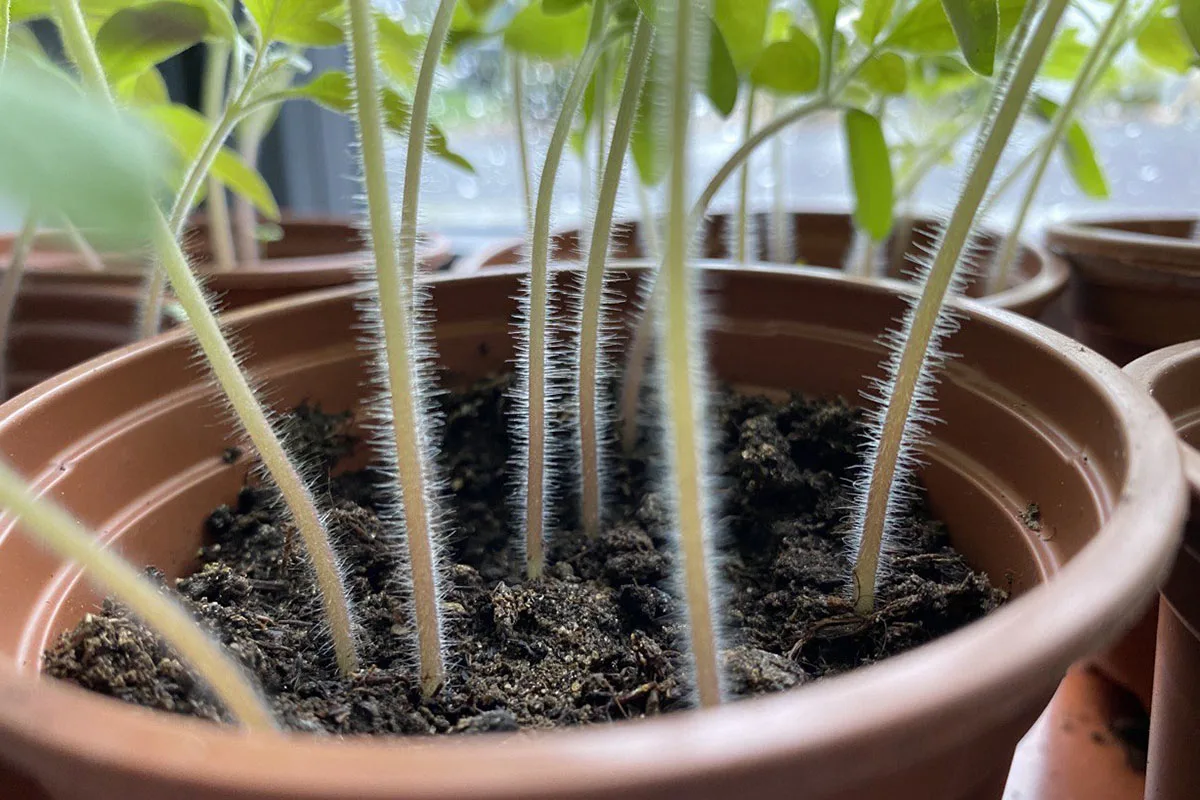
Another common mistake is not setting your seedlings up for success. If you plan on growing tomato seedlings indoors, you’ll need to meet their heat, light and nutrient requirements before moving them out to the garden.
Tomatoes need more light than most seedlings; otherwise, they get leggy. Unless you can match greenhouse conditions in your home, you’ll most likely need grow lights. Seedlings that don’t get enough light will stretch. And while you can fix leggy seedlings, it’s better not to have to do so.
Another thing that often doesn’t receive enough attention is soil temperature. Tomatoes need soil temps of at least 65 degrees F to germinate. Cooler indoor temps can lead to dampening off in new seedlings as well.
If your home is on the cooler side, you’ll need a heated seedling mat to germinate. If you can, set up your seedlings in the warmest room of your home.
5. Not Potting Up Tomato Seedlings Correctly
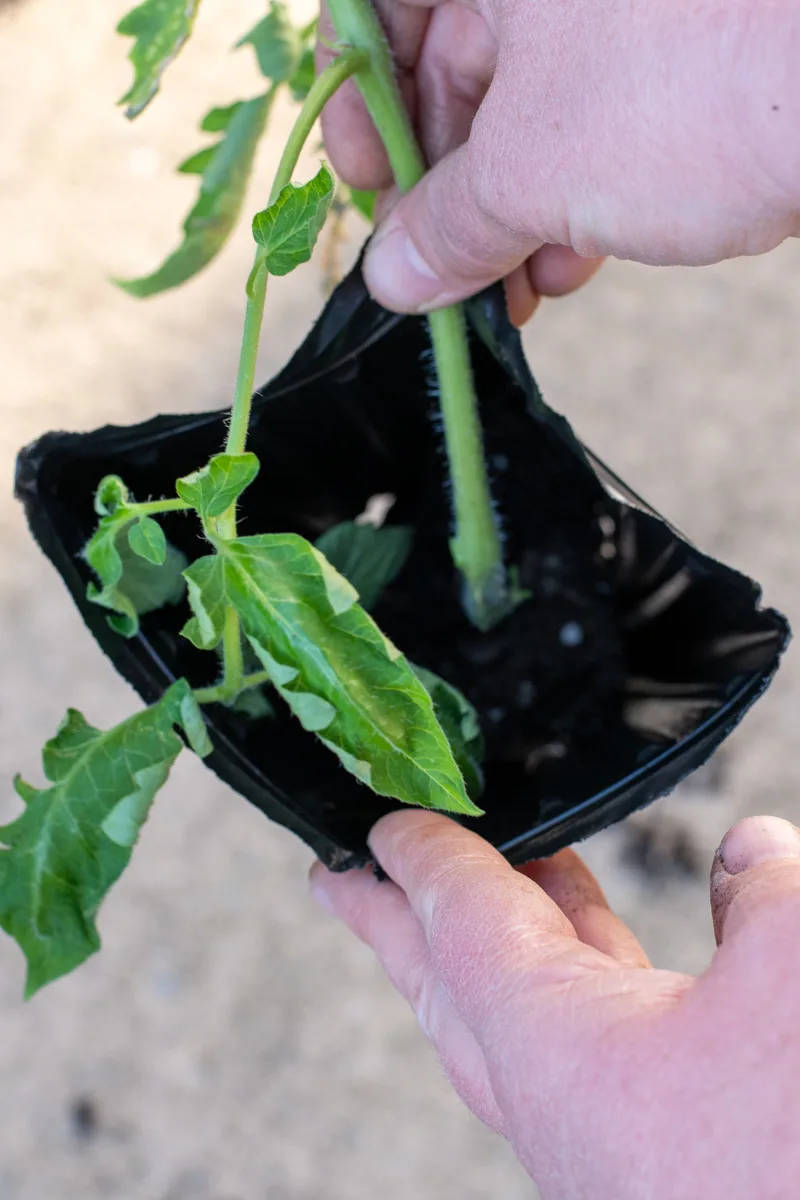
Too many gardeners start tomatoes in a small pot and expect that to suffice until the plant is ready to move outside. But plants will only grow as big as their root system can support. So, if you’re starting plants in small pots, you need to move them into larger pots once or twice before you move them outdoors.
If you don’t pot up your seedlings as they grow, you’ll end up with severely rootbound and stunted plants.
I’ve discovered the secret that allows me to grow monster tomato plants that rival commercial greenhouse seedlings. And it’s all about how you pot them up. You can read about my technique here. (You can also use this method to fix seedlings not potted up regularly.)
6. Skipping the Hardening Off Process for Seedlings Grown Indoors
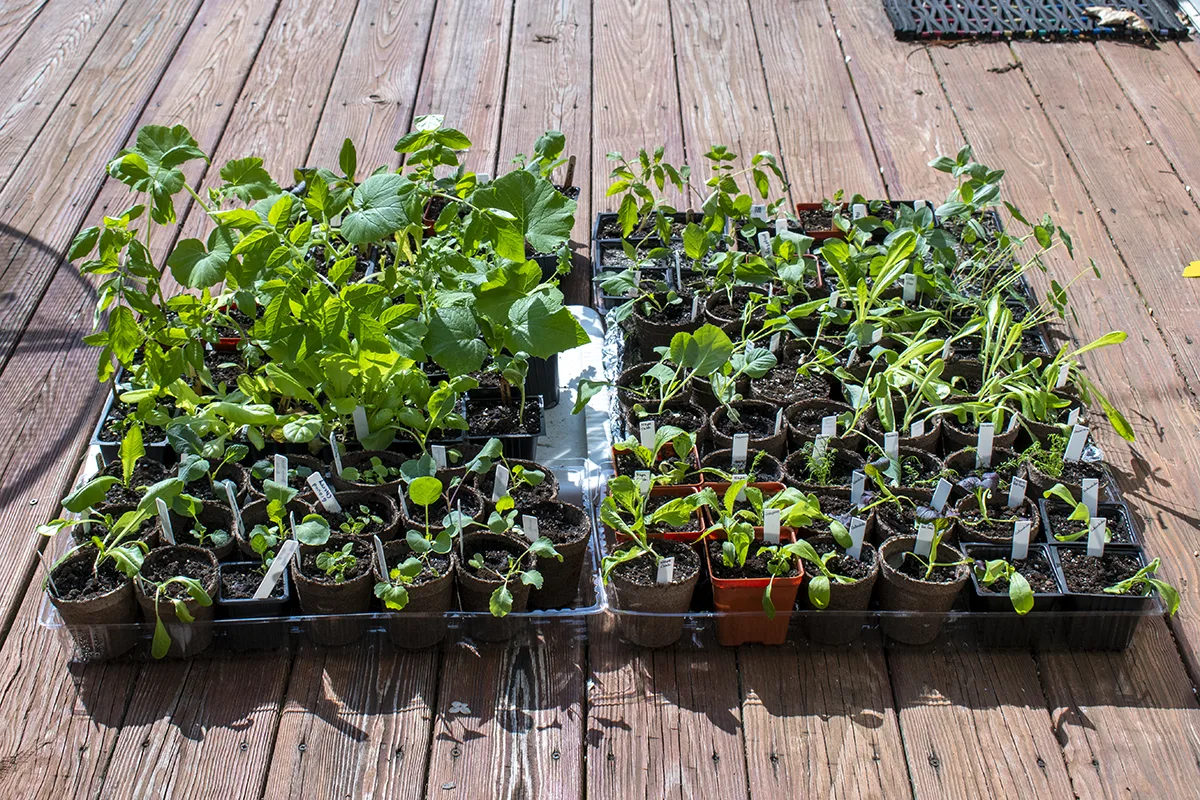
When the weather finally warms up and that final frost is firmly behind you, it’s time to get those tomato seedlings in the garden. And this is where too many gardeners fumble, year after year.
You can’t move plants that were started indoors directly to the garden. No matter how well you’ve attended to their needs, indoor seedlings need a little toughening up to acclimate to outdoor life.
Full sun, wind, cool evening temperatures – these can all be tough on a tender seedling.
A little attention a week or two before you plant them outdoors will ensure your plants go into the garden with minimal stress or plant loss. Read about the essential transplanting steps you need to take.
7. Not Adding Nutrients to Your Seedlings Hole
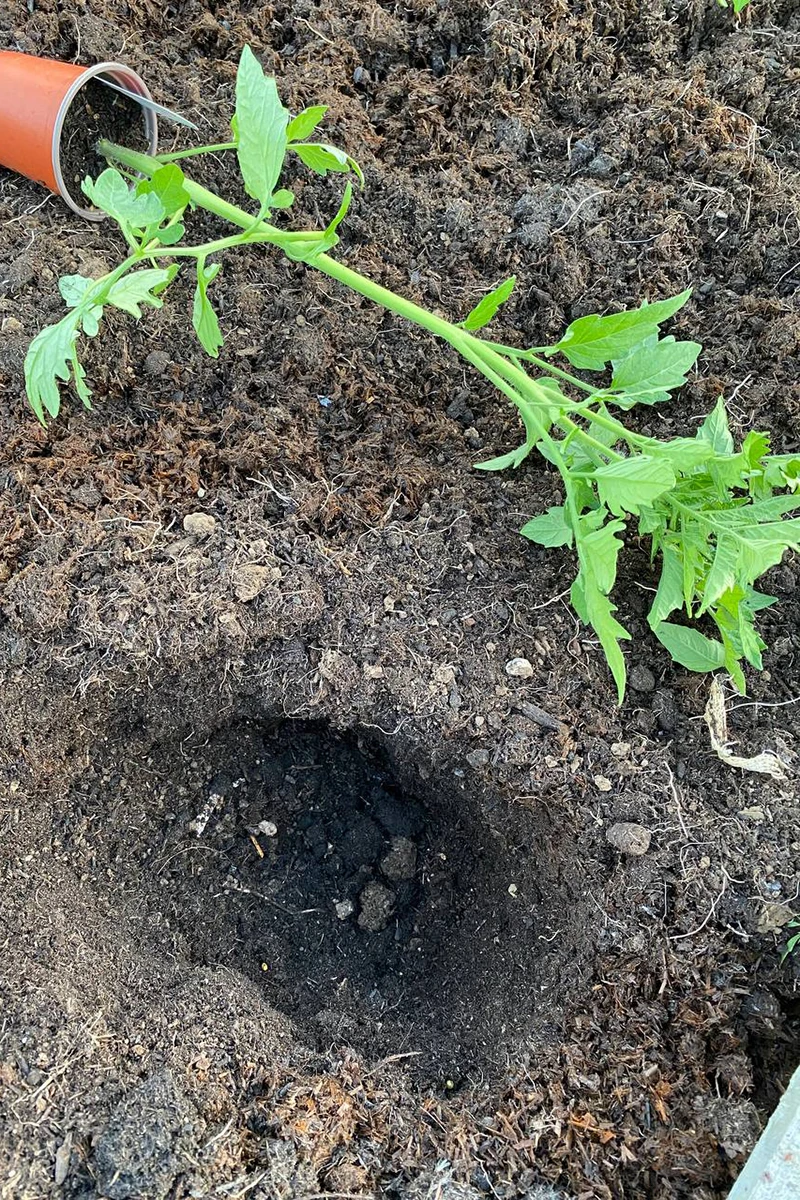
I’ve seen so many gardeners skip out on the one golden opportunity for a massive yield. Once that plant is in the ground, the opportunity is gone until next year.
What is it?
Adding soil amendments to your planting hole. Put nutrients right where they’re needed most – at the roots. Here are 9 amendment suggestions to get your tomatoes off on the right foot this year.
Treat this list like a build-your-own-burger menu, adding a little of each ingredient to benefit your tomatoes.
8. Planting Tomatoes In the Same Spot Each Year
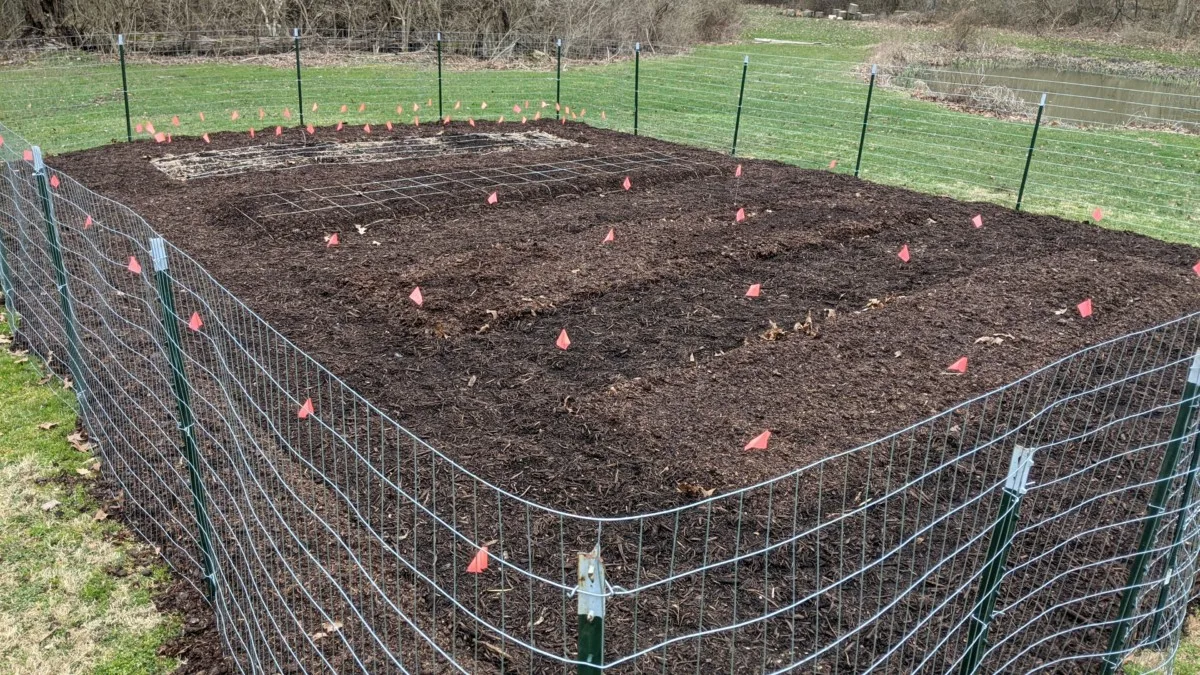
Another common mistake I see tomato growers make is planting their tomatoes in the same spot every year. Different plants use different nutrients in varying amounts. Some plants even put nutrients back into the soil. (Hi, legumes!)
If you aren’t taking advantage of crop rotation, you’re making more work for yourself and putting your plants at risk of encountering disease and pests that winter over in the soil. Planting tomatoes in the same spot every year also leads to depleted soil and lower yields.
Cheryl walks you through the how and why of crop rotation. All it takes is a little extra planning to ensure all of your crops, not just your tomatoes, enjoy the benefits.
9. Not Burying or Trenching Tomatoes
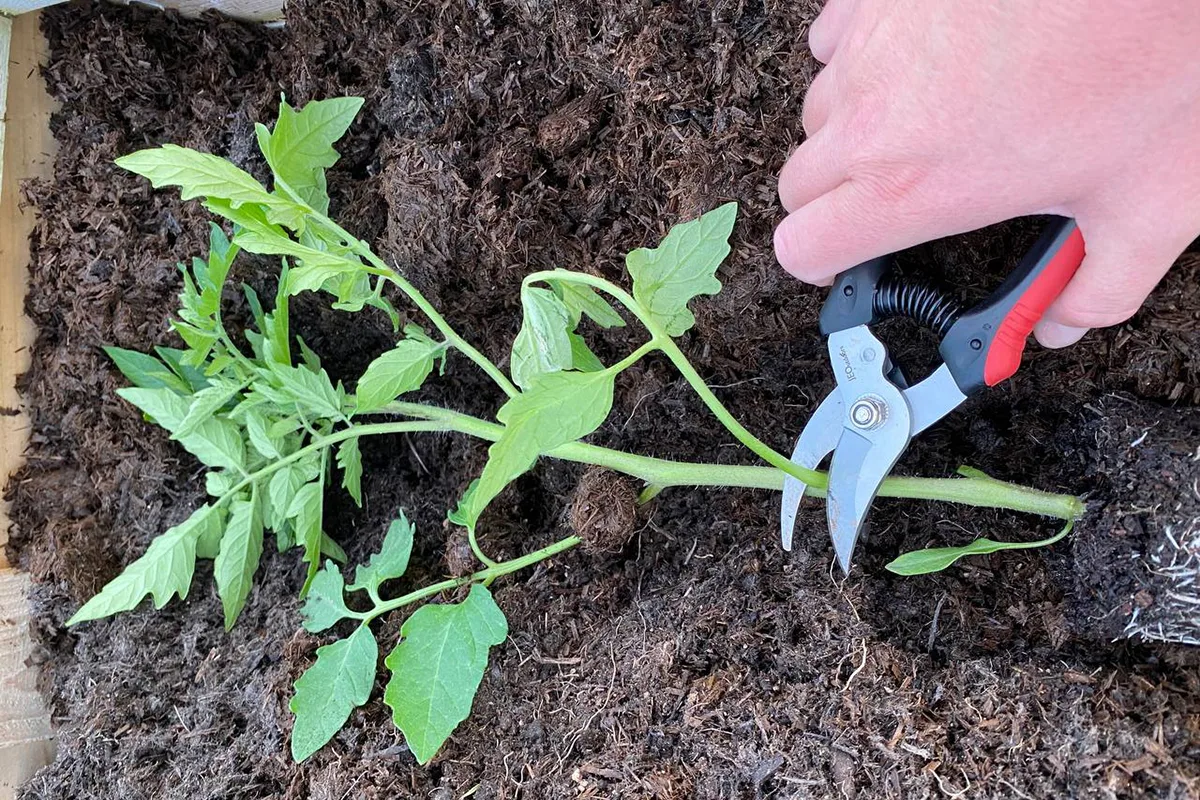
This is probably the most common mistake tomato gardeners make. Tomatoes were designed by nature to have multiple contact points in the soil, ensuring they have a vast root structure to meet their moisture and nutrient needs.
But then we decided to cultivate them so we could grow tomatoes anywhere in the world, which means growing them up off the ground.
If you want strong plants that are drought resistant, have sturdier stems and put out tons of fruit, then you have to bury tomato plants deeply. This allows the plant to create hundreds of adventitious roots along the buried portion of the stem.
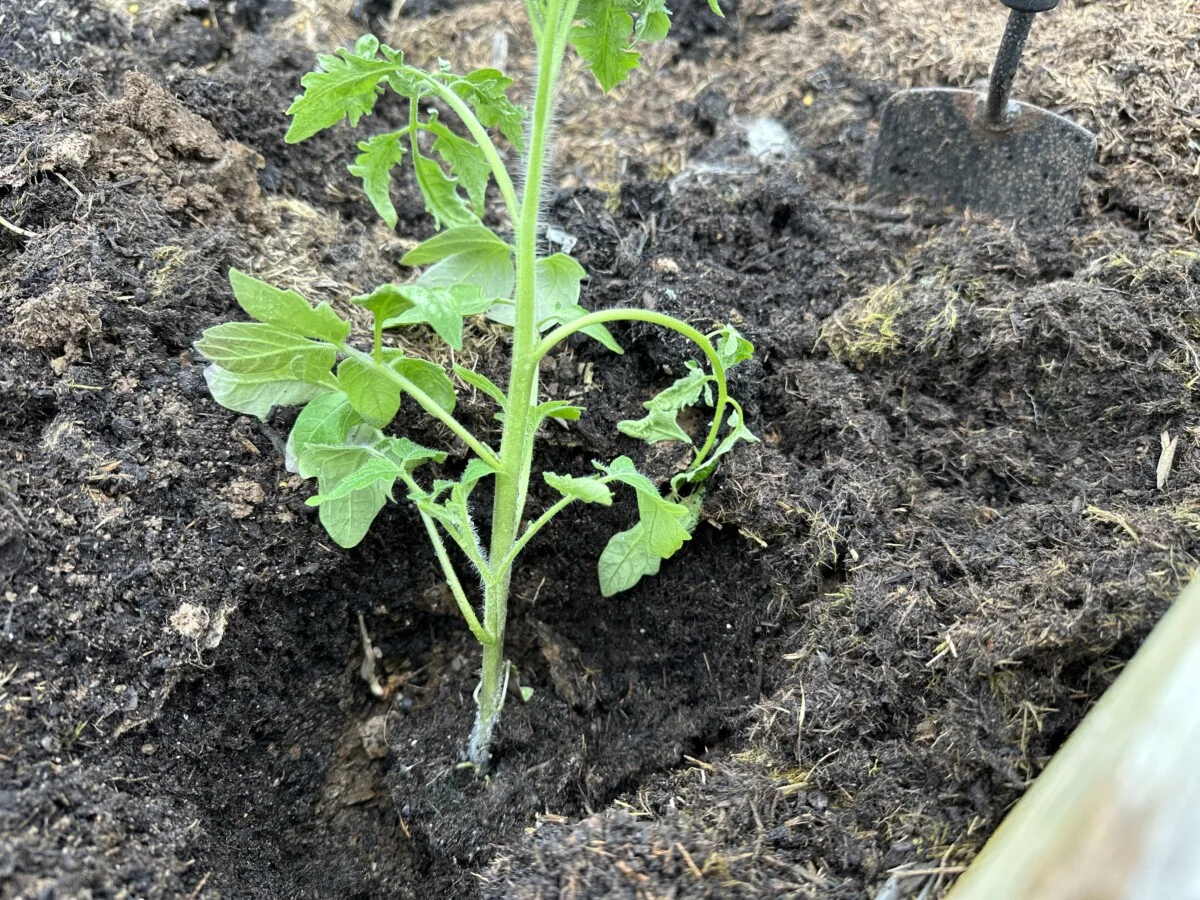
If you can, the best method is to bury the plant deeply. You can easily bury ¾ of the plant. However, not everyone can bury tomatoes that deep because of their soil or container. In that case, you should bury tomatoes sideways in a trench.
You can read about this process and which tomatoes work best for burying or trenching.
10. Planting Tomatoes Outdoors Too Early
I have made this mistake far too often. As gardeners, we can’t help ourselves. We’re eternally optimistic about the weather. Often, our optimism comes at the cost of losing plants to a spring frost or surprise late snow.
Pay attention to the last frost dates for your area, and remember – plants go outside after all danger of frost has passed. So, not the day after your last frost date.
Nighttime temperatures should consistently be above 50 degrees.
If you want to plant tomatoes outside earlier, you need to protect them by growing them undercover. Keep in mind that heirloom tomatoes started in cooler temperatures are also more prone to catfacing.
11. Providing Inadequate Support for Tomatoes
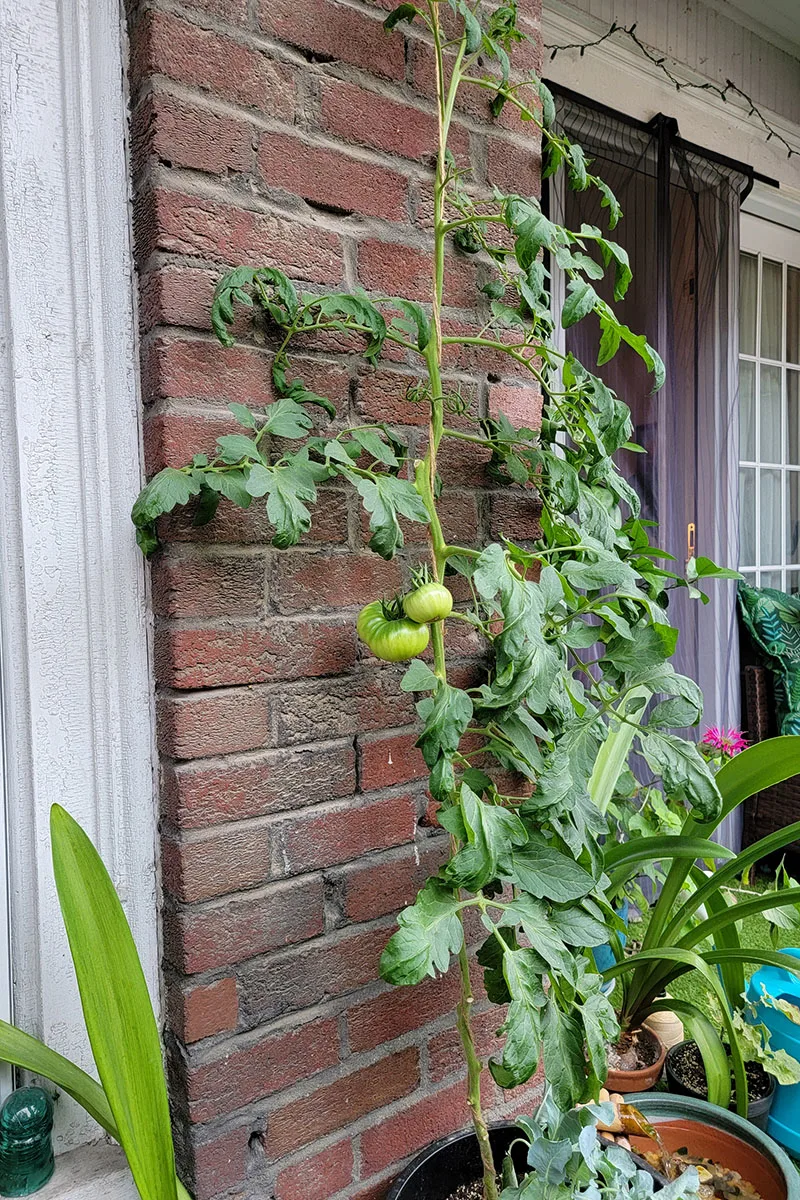
As I mentioned earlier, tomatoes are naturally vining plants. They like to climb. Even determinate tomatoes, with their bush-like growth, can get pretty tall. You have to provide them with support, or you risk the whole plant snapping under the weight of all their fruit and foliage.
But too often, we underestimate how large our mature tomatoes will be and end up putting up a support system that isn’t strong enough for these large plants.
These days, I only espalier my tomatoes (train them up a string or fence). I have fewer issues with disease, I get more fruit, and the tomatoes don’t take up nearly as much room.
There are numerous options for staking tomatoes; make sure you pick one that works for you.
12. Not Pruning Tomatoes
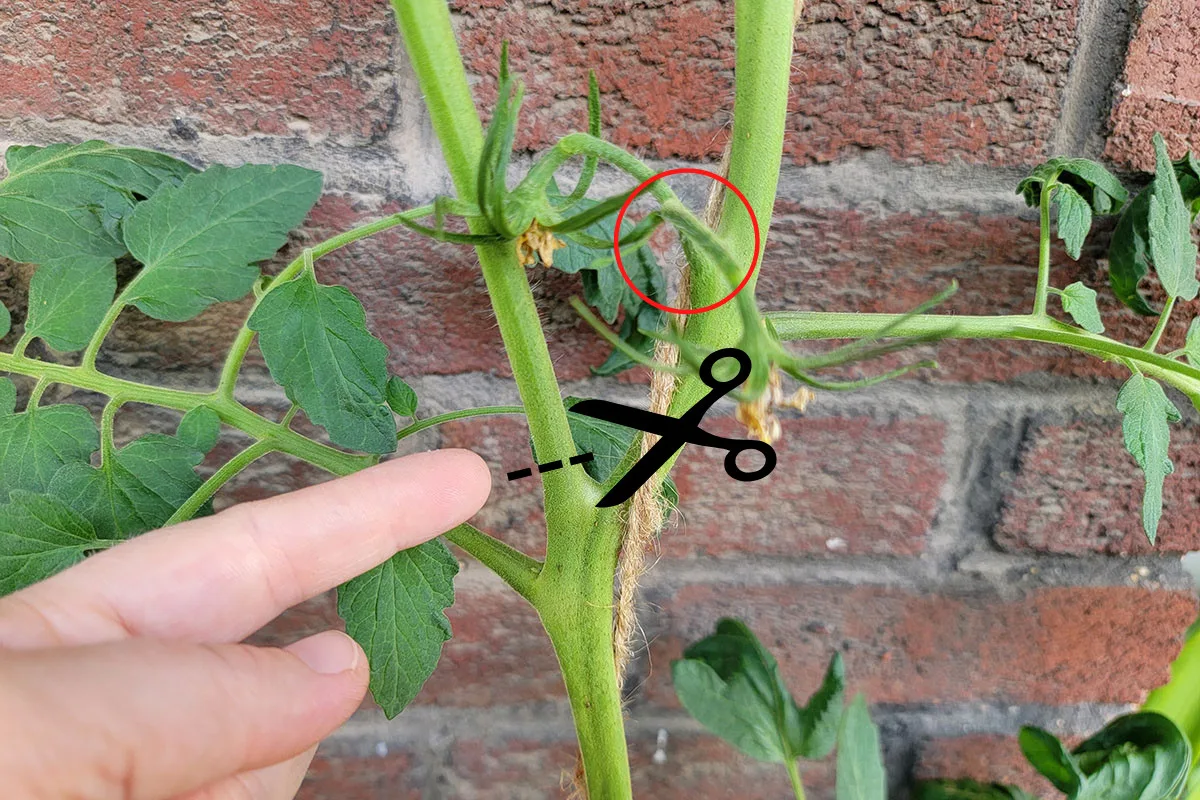
Despite what some people think, tomatoes are not a set-it-and-forget-it plant. To ensure you get the maximum yield, you will need to prune tomatoes several times over the course of the season. Here’s a step-by-step guide on how and when to prune tomatoes.
For determinate tomatoes, you don’t want to prune them too much, as they will grow to a fixed size and then stop. Over-pruning determinate tomatoes results in fewer fruits in the long run. Prune them just enough to make their bushy growth manageable.
Indeterminate tomatoes will always set new fruit above where they last set fruit on the vine. To keep your tomatoes neat and tidy, consider pruning them from the bottom up as the season progresses.
One of the easiest ways to grow indeterminate tomatoes is by training them up a string. You’ll effectively be ‘pruning’ the tomato throughout the growing season by pinching off new growth and directing how it grows. It’s an effective way to grow lush tomatoes that don’t take up a ton of room.
If you aren’t training them up a string, then a good late summer pruning is a good idea.
13. Not Taking Advantage of Companion Plants
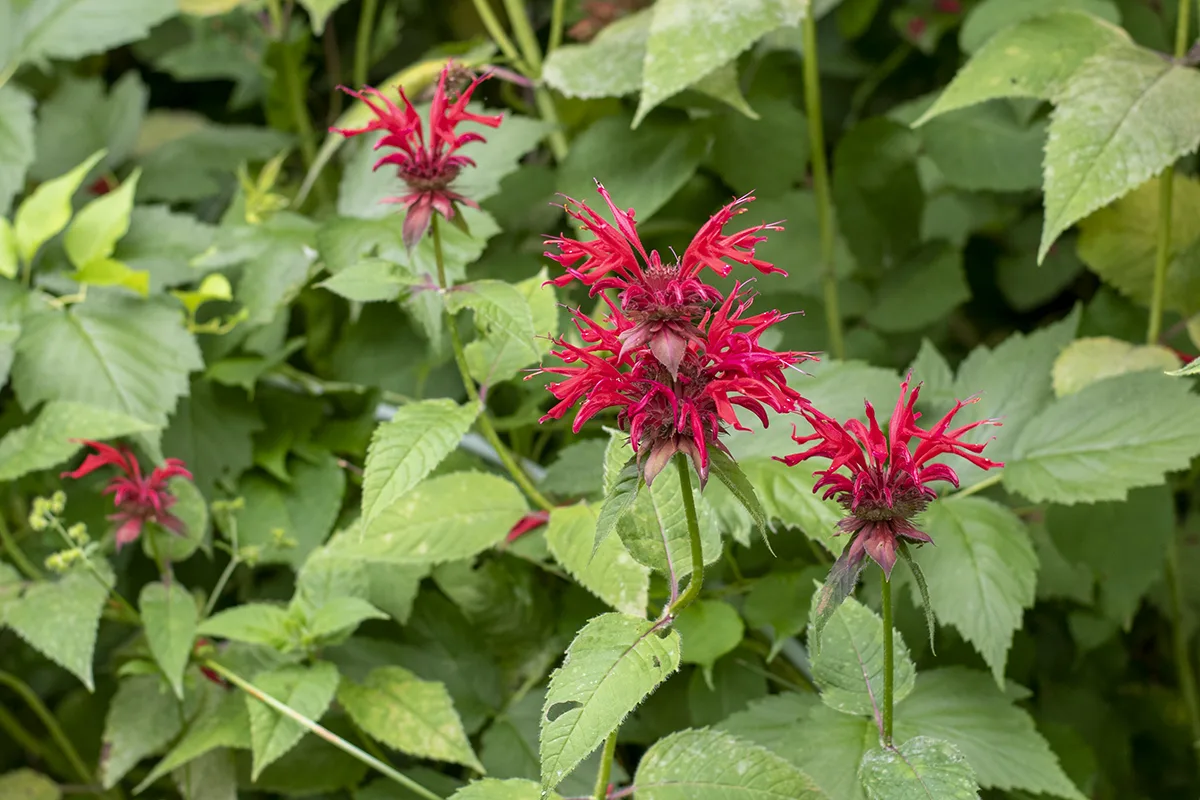
There are over 35 different tomato companion plants. It’s a mistake not to plant at least a few with your ‘maters. Not only does companion planting make great use of different plants’ natural attributes, adding nutrients to the soil or defending other plants, but using companion plants is a great way to maximize planting space in the garden.
Sure, we all know about tomatoes and marigolds, but you have many other options. Plant a companion plant fortress around your tomatoes this year.
14. Improper Watering
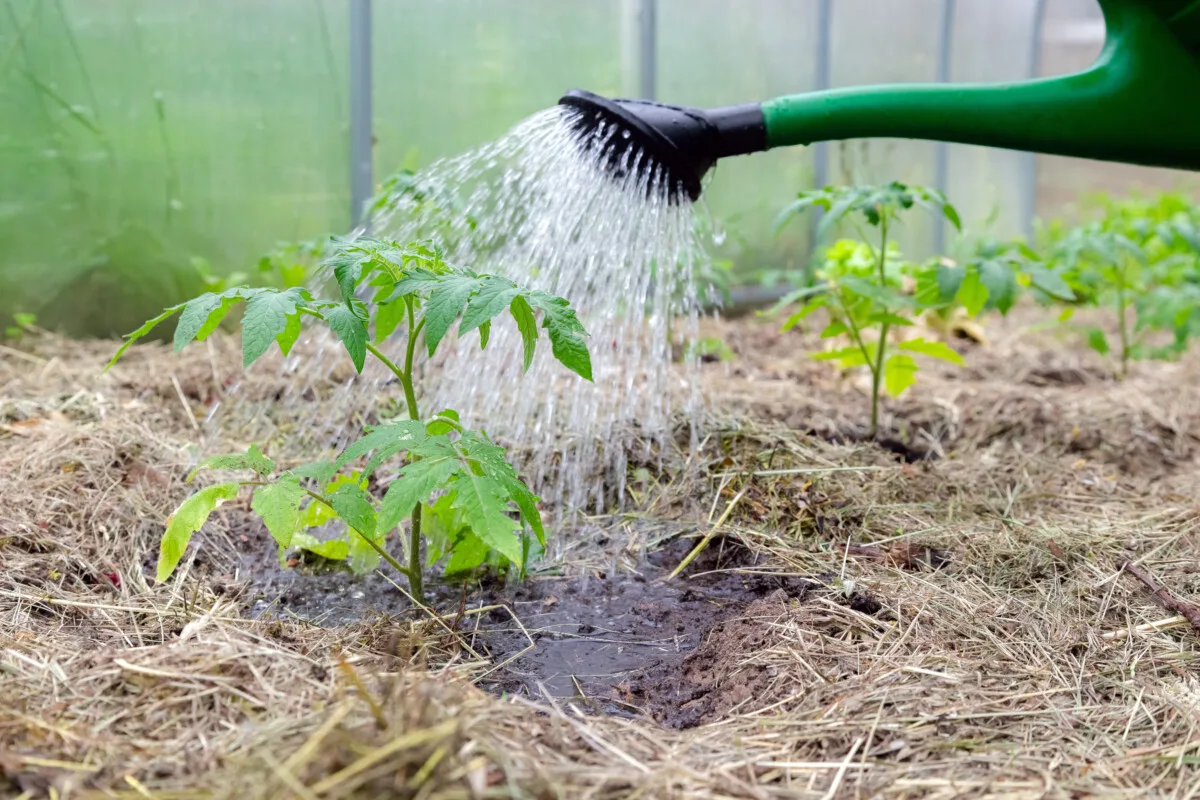
One of the easiest mistakes you can make as a gardener is overwatering. This is especially true of tomatoes. Too much water at the wrong time can lead to burst fruit and tomatoes that are more susceptible to disease.
On the other hand, not watering them enough can stress the plant out, halting fruit production as it expends all its energy into creating more roots to increase its water absorption.
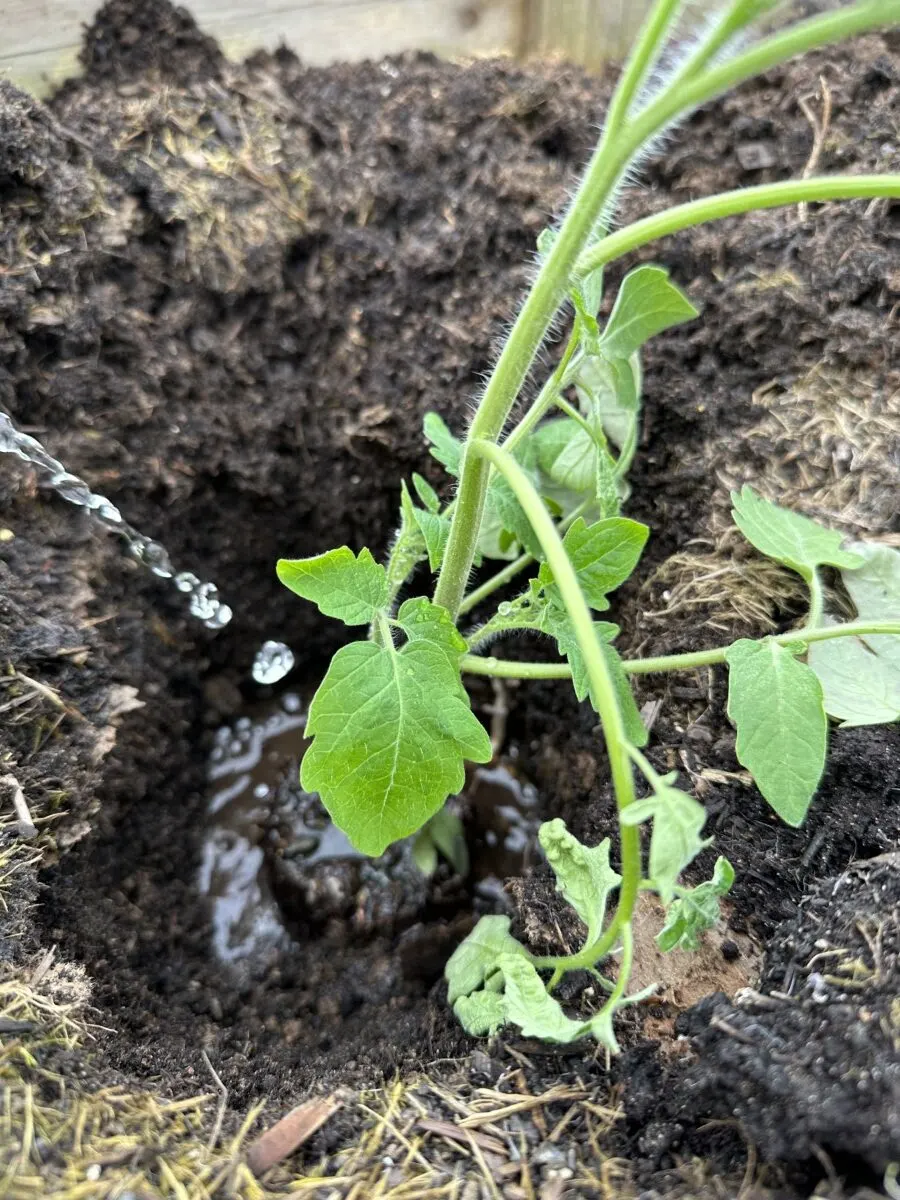
When tomatoes are developing flowers and fruit, you need to ensure they receive water regularly.
Tomatoes do best with less frequent watering, but a good thorough soaking when you do. 1-2 inches a week is a good rule of thumb. Ideally, you don’t want them to dry out between waterings completely. Again, this is why it’s important to bury tomatoes deeply.
It’s also a good idea to reduce or stop watering at the end of the season. This can increase the number of mature fruits you get.
Because tomatoes are susceptible to many soil-borne illnesses, water tomatoes at the base of their stem rather than from above.
15. Using the Wrong Fertilizer or Fertilizing at The Wrong Time
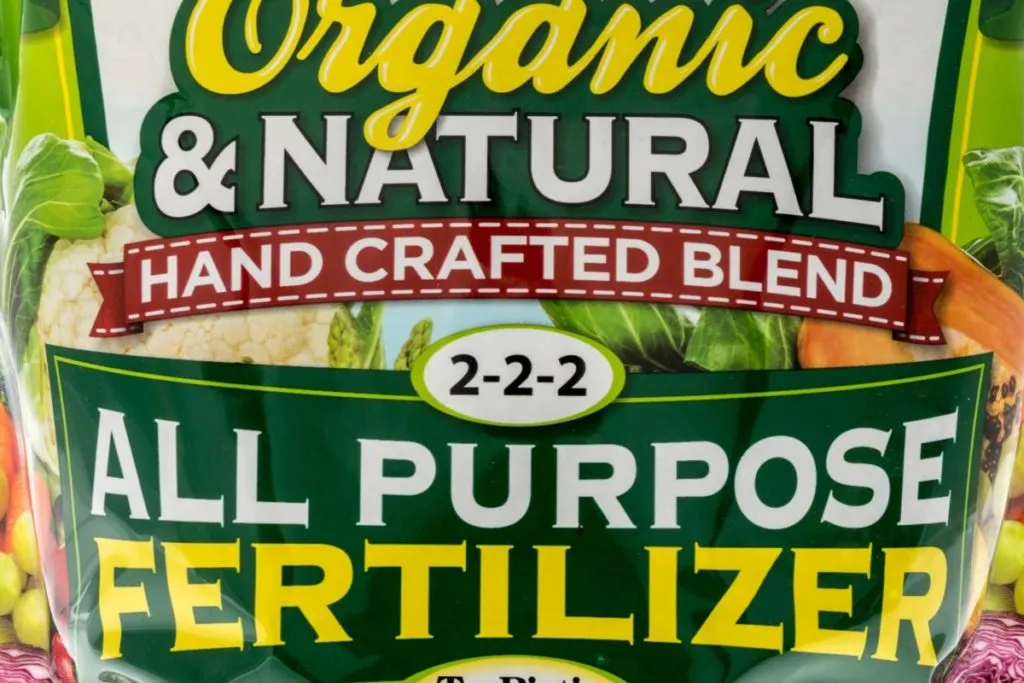
Many gardeners hear that tomatoes are heavy feeders and immediately reach for the fertilizer. But you have to be careful with what fertilizers you use and when.
For instance, at the beginning of the growing season, tomatoes need plenty of nitrogen to grow the large stems needed to support a heavy plant and all the lush foliage that will prevent sunscald. But once they begin setting flowers, tomatoes need higher amounts of potassium and phosphorus.
It’s important to time your tomato feeding schedule with what the plant needs for its current stage of development.
Before the season starts, you should test your soil to find out if there are any deficiencies and go from there.
To become more familiar with the nutrient needs of tomatoes and when to feed those nutrients, read my Tomate Fertilizing Guide. It will set you up for success from seedling to the end of the season.
16. Forgetting to Mulch Tomatoes
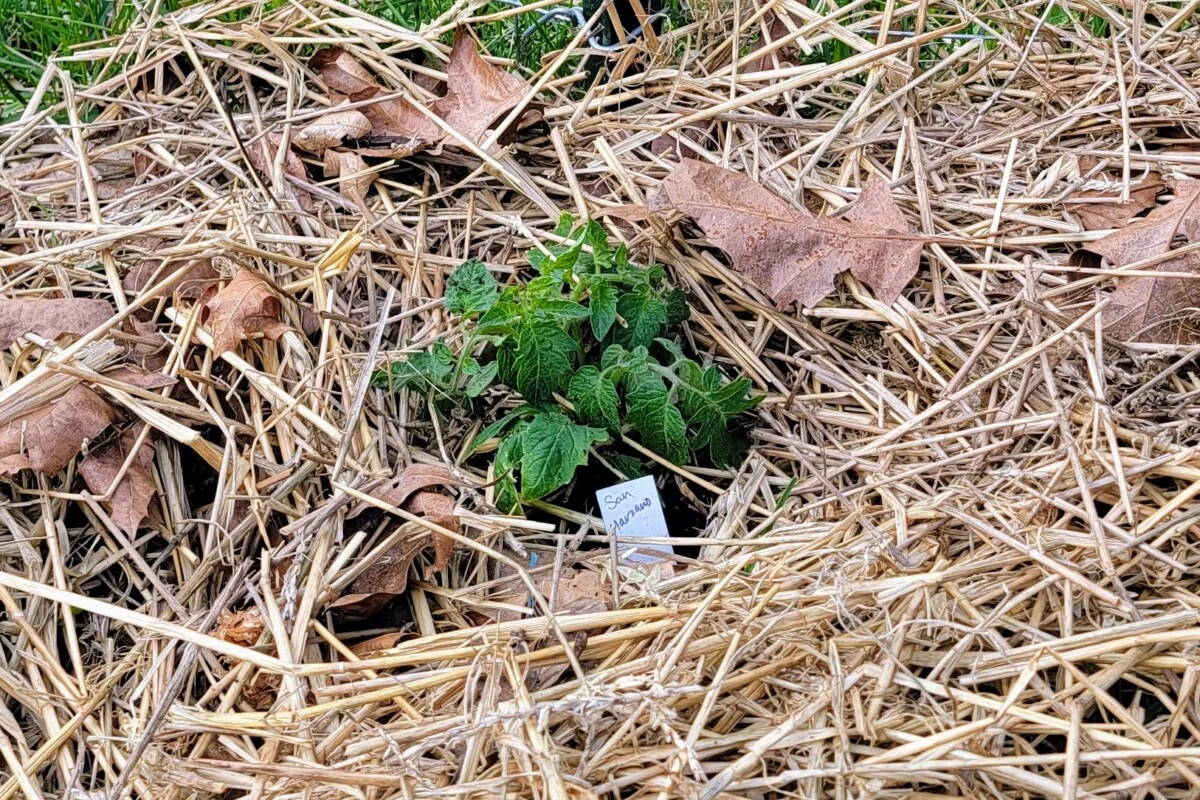
Remember how we discussed not letting tomatoes dry out completely between waterings? Mulch is huge in preventing that. It also creates a barrier between the tomato leaves and the soil. This prevents soil from splashing onto the bottom of the leaves when it rains, which can introduce soil-borne disease.
Mulching also keeps nutrient-stealing weeds to a minimum. Don’t make the mistake of skipping out on mulch.
17. Not Monitoring for Tomato Diseases & Pests
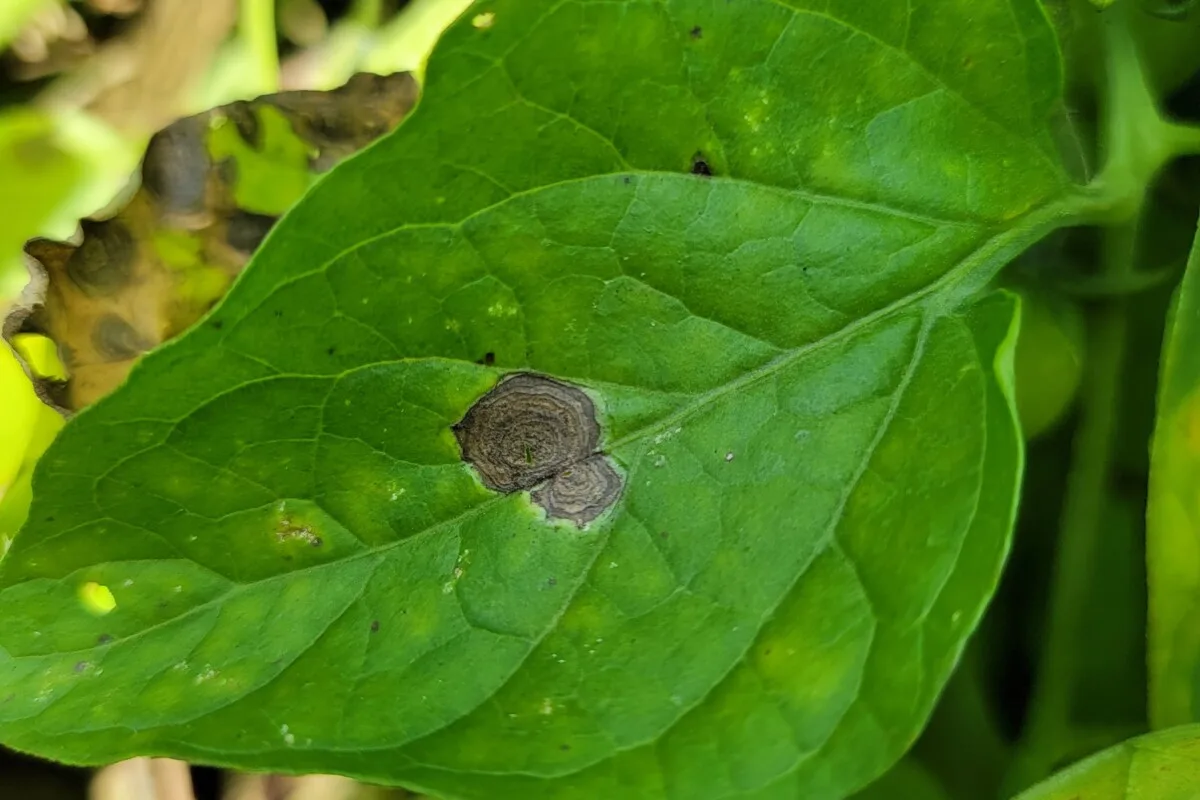
Our love of developing new tomato varieties has ultimately led to their being highly susceptible to disease and pests. Wild tomatoes in their natural habitat are much tougher than our cultivated varieties.
But all things considered, if you monitor your tomatoes, it’s pretty easy to catch issues early and mitigate them before you lose a plant or a lot of fruit.
Not giving your tomatoes a thorough look whenever you’re out in the garden is an all too common mistake. Make sure you’re taking a few moments to look at your plants.
- Are there new spots?
- How do the leaves look? Are they discolored?
- Do you notice pest damage or signs of pest presence?
Noting these things early means you can deal with them before they become a problem.
18. Not Taking Advantage of Methods to Ripen Green Late Season Tomatoes
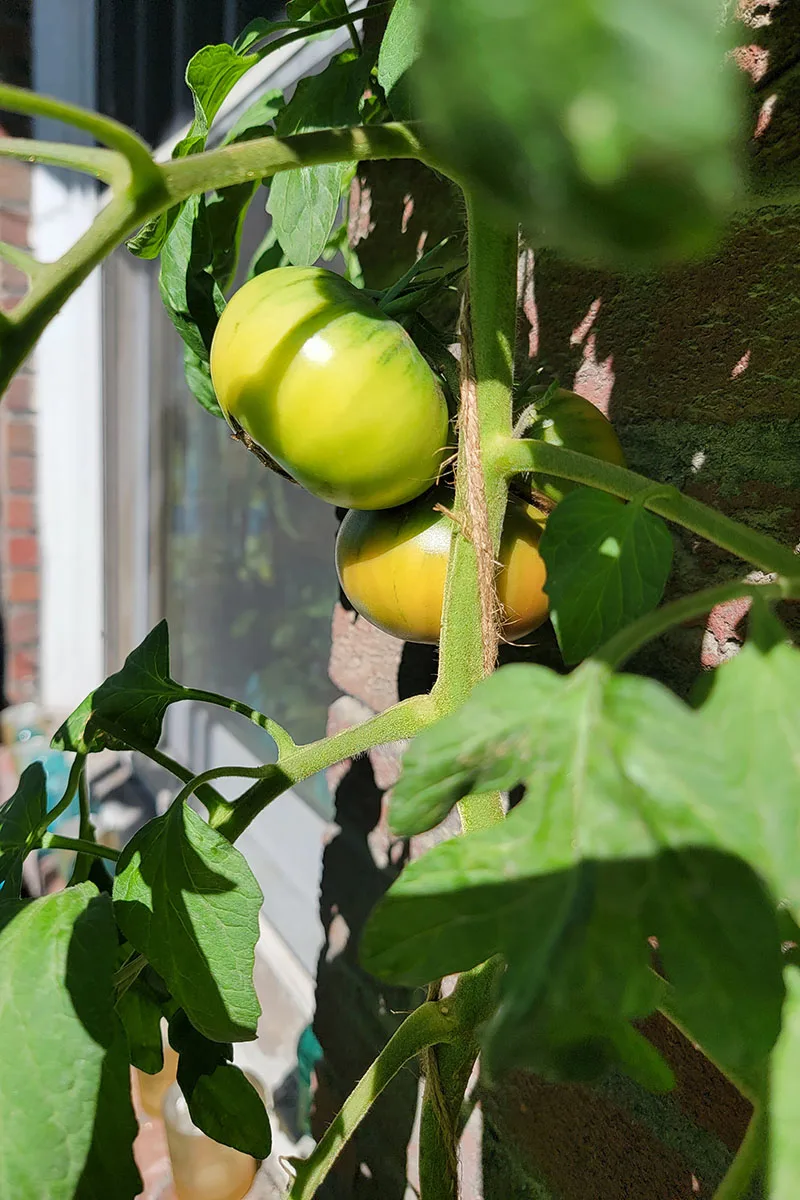
As the season draws to a close, too many of us throw in the towel, leaving lots of tomatoes on the vine. But there are ways to hasten ripening and ensure you get the most out of your growing season.
Check out our article offering ten tricks to ripen green tomatoes faster.
19. Letting Your Bounty Go to Waste
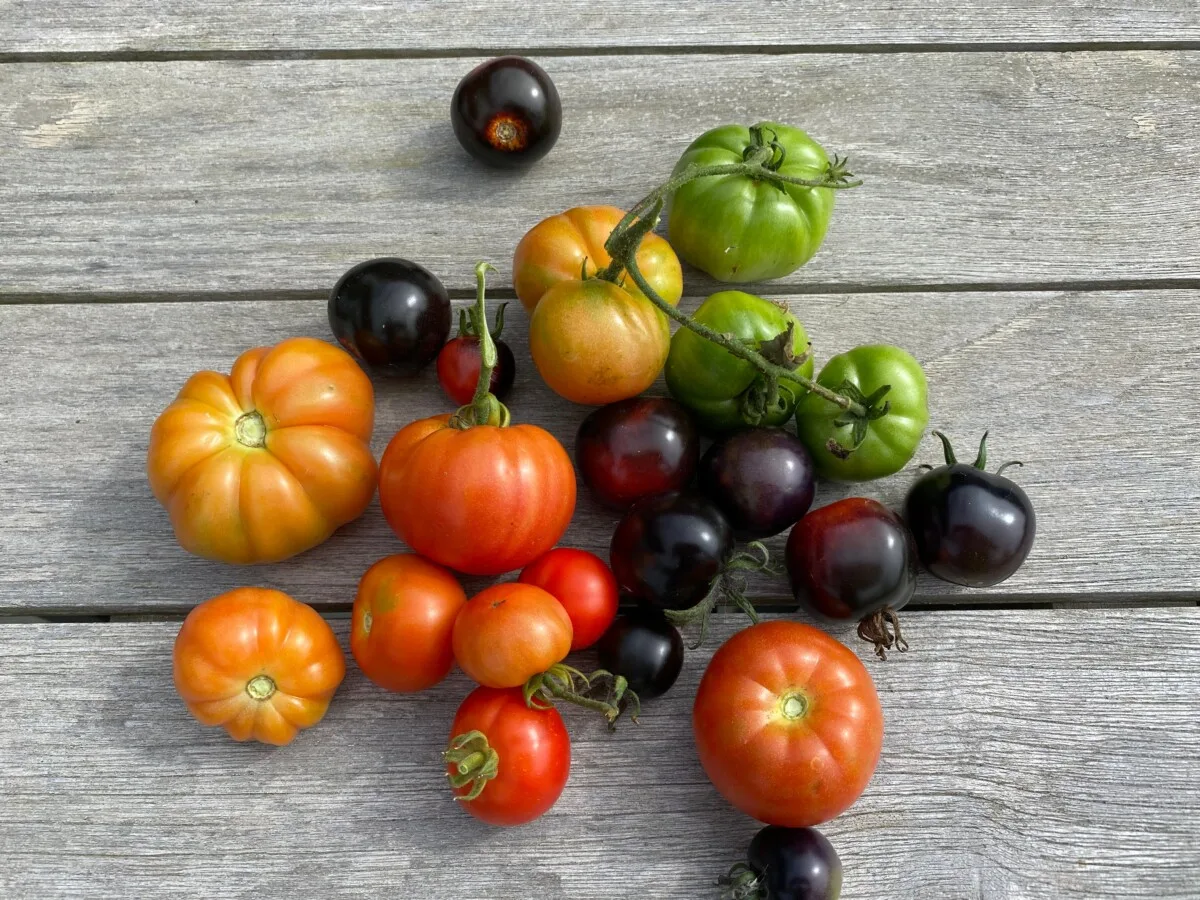
Don’t let all those green tomatoes spoil! You may find yourself at the end of the season with a bunch of tomatoes that won’t have enough time to ripen. But don’t leave them to rot on the vine. There are so many delicious ways to enjoy green tomatoes.
I see too many gardeners leave tomatoes in the garden at the end of the season because they’re green. You could be eating them. We’ve got 21 different recipes for green tomatoes.
20. Not Cloning a Tomato for Next Season
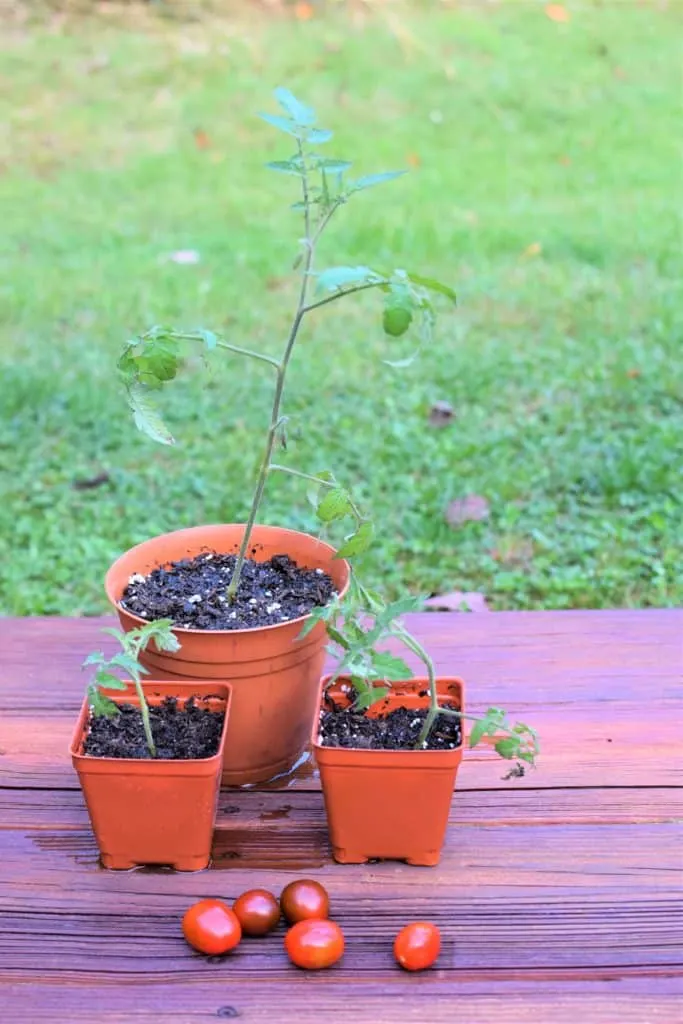
Did you know you can store tomatoes as bare root vegetables? Don’t make more work for yourself next year. Use our guide on starting tomato clones from cuttings and get next year’s tomatoes started this fall.
Once tomato clones are established, you can cut them back hard and remove them from the dirt. Clean the roots off and wrap them in moist brown paper. Keep them someplace cool and dark (like your garage or basement.
Then, next year, there’s no worrying about leggy seedlings or starting seeds on time. You’ve got a plant that’s ready to go.
Simply soak the roots in water for a few hours, then plant your clone in a deep pot. When it’s warm enough to plant outside, you’ll have an established tomato plant ready to go.
21. Not Taking Good Notes for Next Year
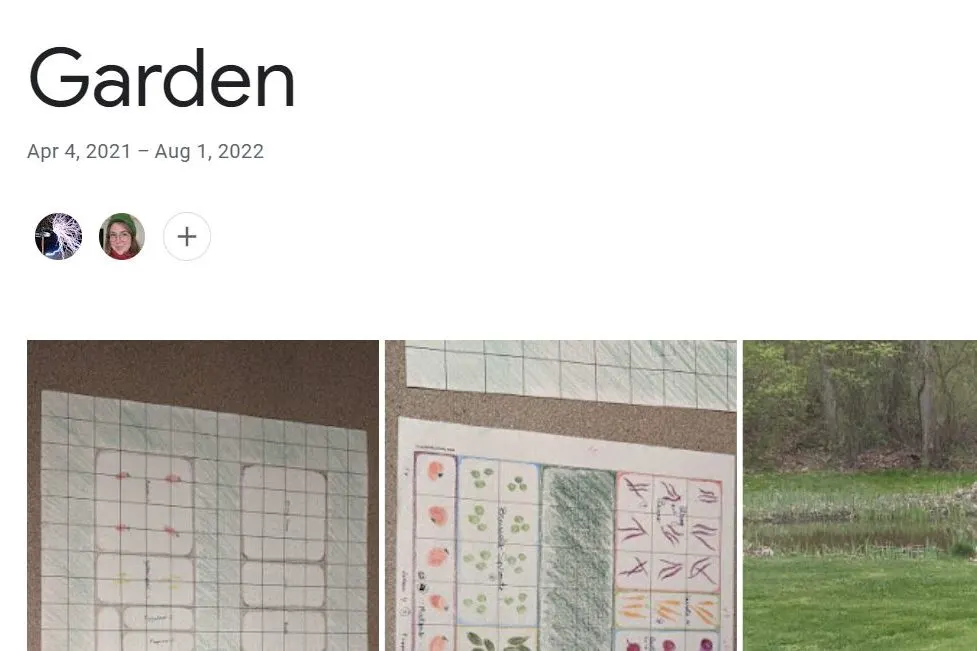
Too many of us make this mistake each year. Time has a way of making us forget. Even if it’s over the course of the winter. When it’s time to order seedlings for the new garden, we can’t remember:
- What was that variety we really liked last year called?
- Which tomato did we grow that had a very bland flavor?
- Did we plant tomatoes in the end row or the second to end row?
Take good notes throughout the season to make planning next year’s garden easier.
Use my solution if you’re like me and are terrible at taking notes. Each year I start a folder in my Photos called “Whatever Year It Is – Garden,” and I snap photos and add captions to them whenever I go out to the garden. It’s quick, and it’s done before I forget.
Then I have a wealth of information at my fingertips when I need it.

Get the famous Rural Sprout newsletter delivered to your inbox.
Including Sunday musings from our editor, Tracey, as well as “What’s Up Wednesday” our roundup of what’s in season and new article updates and alerts.

